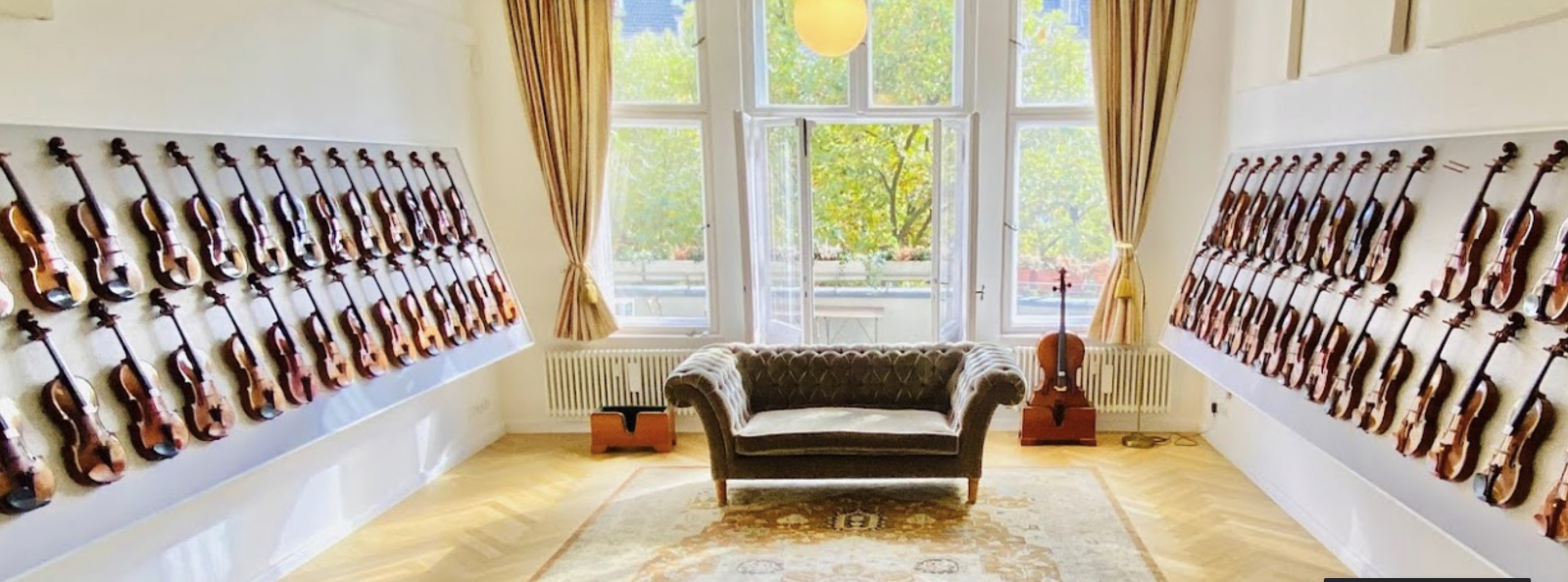In His Hands, Antique Violins Reveal Their Past and Their Value
The Washington Post, March 16, 2010
By John KellyThe Japanese factory owner bows as he presents his business card to the violin whisperer. The violin whisperer bows as he presents his business card to the Japanese factory owner. That formality aside, the Japanese factory owner opens the case that rests on the polished conference table between them.
“Oooh, this looks good,” says Jason Price, the violin whisperer.
All day Sunday, Jason appraised violins, violas and cellos in a small meeting room in the Sofitel hotel on 15th Street NW. Thirty-two people had made appointments with the expert, who runs Tarisio, a New York-based auction house devoted to antique instruments.
“You never know what’s going to walk in next,” Jason had told me between the free appraisals. “Everything has a story.”
There was, for example, the elderly woman from Cumberland, Md., who arrived with her daughter.
“This was my father’s,” the older woman says while unlatching a violin case. “He was very good. Then he met my mother, and the violin stayed in the case.”
He went into business with his in-laws and ran a tavern.
“He hated that job every day of his life,” she says. Sometimes, when he thought no one was listening, he would play the violin.
Jason, 33, grew up in Alexandria, played cello in the T.C. Williams High orchestra, went to violin-making school in Cremona, Italy, and learned his craft — the ability to discern a maker’s hand in the scroll of a head, the curve of an f-hole — from examining thousands of instruments.
“The most important thing is the object,” he told me more than once. “It doesn’t matter what the label is, what the papers say or what the grandfather says. It matters what it is.”
The label inside the woman’s violin says Camilli, an 18th-century maker in Mantua. “It’s not a Camilli,” Jason says. Spurious labels, usually not placed there to deceive but to identify a model (the “Stradivarius” model causing palpitations among people emptying their attics), are common.
“More likely it’s an English violin from around 1820 instead of an Italian violin from 1735,” Jason adds. “The biggest thing that gives it away is that the top is pine instead of spruce. That’s what the English had to work with.”
Jason estimated that the violin would sell for $2,000. “If it were a Camilli, it would be $200,000,” he says.
The woman signs the paperwork consigning the violin to Jason.
“I think it’s good you can let it go,” says her daughter, putting a consoling arm on her mother’s shoulder.
And then the Japanese factory owner and his translator walk in. The violin he pulls out glows like a piece of polished amber. Jason turns it in his hands, his fingers occasionally brushing the strings (accidentally; no one will actually play the violins this morning). A lovely sound issues forth, like a symphony warming up.
This is an exquisite instrument, made in 1726 by David Tecchler, the best violin maker in Rome. The Japanese factory owner explains that he bought it in Tokyo in the late ’90s. He has ample paperwork on its provenance. He also is interested in selling a bow, from Alfred Lamy.
“It’s flawless,” Jason says as he flexes the bow gently and examines its tortoiseshell and gold frog, the adjustable end where the horsehair attaches.
The translator explains that the factory owner loves the violin and the bow, “but business is down, and so he doesn’t want to give them away, but he must sell them.”
He is hoping for $50,000 for the bow. “That’s going to be hard,” Jason says. “I think we’ll have to start at half that. Do you want to give me an idea of what you’d like to get for the violin?”
There is some discussion between the two Japanese men before the translator answers: $100,000.
“That’s about right,” says Jason.
I ask if the Japanese factory owner ever considered becoming a professional violinist.
“His father ran a machine shop company, so he was destined to run a machine shop company,” says the translator. “The violin is a hobby.”
Papers are signed. Hands are shaken. Jason slips the string of a tiny paper tag around the violin and another around the bow. They will be auctioned in April, old objects destined to make music once again.


